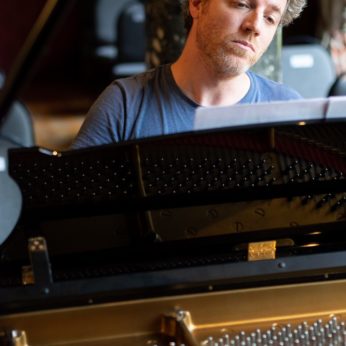Composer: Johann Sebastian Bach (b. 1685 - d. 1750)
Performance date: 30/06/2018
Venue: Bantry Library
Composition Year: 1742
Duration: 00:42:29
Recording Engineer: Tom Norton, RTÉ
Instrumentation: pf
Instrumentation Category:Solo
Artists:
Cédric Pescia -
[piano]

0. LATE GREAT SHOW – BANTRY HOUSE 22.30
Cédric Pescia [piano]
Johann Sebastian Bach [1685-1750]
Goldberg Variations – Aria with Diverse Variations BWV988 [1742]
1. Aria
2. Variation 1
3. Variation 2
4. Variation 3 Canone all’Unisono
5. Variation 4
6. Variation 5
7. Variation 6 Canone alla Seconda
8. Variation 7 Al tempo di Giga
9. Variation 8
10 Variation 9 Canone alla Terza
11. Variation 10 Fugetta
12. Variation 11
13. Variation 12 Canone alla Quarta
14. Variation 13
15. Variation 14
16. Variation 15 Canone alla Quinta – Andante
17. Variation 16
18. Variation 17
19. Variation 18 Canone alla Sexta
20. Variation 19
21. Variation 20
22. Variation 21 Canone alla Settima
23. Variation 22 Alla breve
24. Variation 23
25. Variation 24 Canone all’Ottava
26. Variation 25 Adagio
27. Variation 26
28. Variation 27 Canone alla Nona
29. Variation 28
30. Variation 29
31. Variation 30 Quodlibet
32 Aria.
The Aria that Bach uses as a theme for his variations is a dignified sarabande, full of tenderness and poise. It is also highly embellished with ornaments that are, in the French manner, an essential part of the melodic line, not optional extras. But the attraction of the theme is not the tune, but the bass, which provides a familiar sequence of chords so simple that it can harmonise with almost everything and so clear that even the most fantastic variation will seem firmly anchored. Throughout we have the same harmonic structure of thirty two bars divided into two parts of sixteen bars each moving from the tonic of G major through to the dominant of D major, where the second part begins, returning home in the last eight bars. On these foundations Bach builds his magnificent edifice with its wonderful proportions and astonishing variations.
The Aria and each of the thirty Variations have repetition signs at the end of each of their sections. Cédric Pescia does not play these repeats. He argues that for me these repetitions seem to alter the harmonic flow of the work; the repetition of the first part represents an unexpected return to the tonic and destroys the sense of a gradual progression from the tonic to the dominant. This naturally halves the length of the work from more than eighty minutes to a more manageable forty. He also argues that Bach’s fermatas are more of a conventional signpost than an instruction to fragment the whole.
The Variations are organised in groups of three for maximum contrast and cumulative effect. Each group begins with a free variation, often in the form of a dance. The next in the set is a toccata (with one exception) with the most brilliant and virtuosic variations in this group. The third variation takes the form of a contrapuntal canon in two parts, usually with a free bass line below based on the theme. In these the two upper voices engage in exact imitation, beginning at the unison in Variation 3, and moving up step by step so that Variation 27 is a canon at the ninth. (Variation 30 should be a canon at the tenth, but instead Bach plays a practical joke with a quodlibet (what you please) a brief melange of popular tunes.)
The idea of a canon is that one single theme is played against itself. This is done by having copies of the theme played by the various participating voices. But not all themes will harmonise with themselves for each of its notes must serve in two roles, it must firstly be part of a melody and secondly it must be part of a harmonisation of the same melody. At the same time the whole process must obey the usual rules of modulating from one key to another. Bach clearly relished puzzles of this nature and indulged in all sorts of wild complications. The famous portrait of 1746 by Elias Gottlub has him holding a six-part canon from this time.
Francis Humphrys
Copyright © 2025 West Cork Music. All rights reserved.
Designed and developed by Matrix Internet